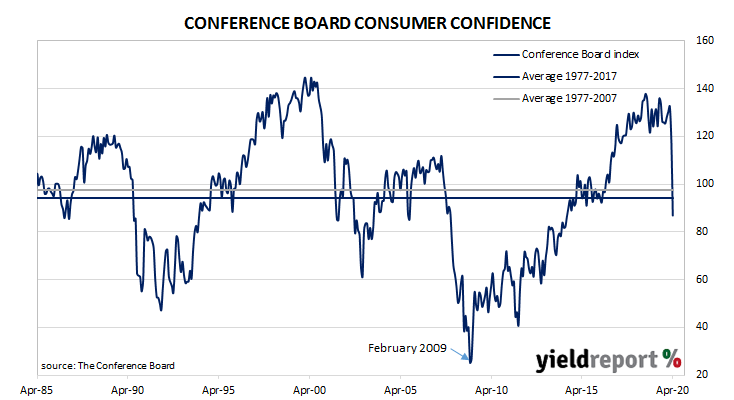US consumer confidence collapsed in late 2007 as the US housing bubble burst and the US economy went into recession. By 2016, it had clawed its way back to neutral and then went from strength to strength until late 2018. Measures of consumer confidence then oscillated within a fairly narrow band at historically high levels until March 2020.
The latest Conference Board survey held during the first half of April indicates US consumer confidence has nosedived after deteriorating significantly in March. April’s Consumer Confidence Index registered 86.9, below the median consensus figure of 90 and substantially below March’s final figure of 118.8. Compared to consumers’ views held at the time of the March survey, their views of present conditions collapsed while their views of future conditions actually improved a little.
A month ago, Lynn Franco, a senior director at the Conference Board had said March’s fall was “more in line with a severe contraction, rather than a temporary shock”. This month’s drop prompted her to say the record fall in the Present Situation sub-index “reflects the sharp contraction in economic activity and surge in unemployment claims brought about by the COVID-19 crisis.”
US Treasury markets reacted by sending longer-term yields higher. By the end of the day, the yield on 2-year Treasury bonds had slipped 1bp to 0.22% while the 10-year yield had gained 5bps to 0.66% and the 30-year yield had increased by 8bps to 1.26%.
In terms of US Fed policy, a rate change of any sort remained unlikely given the federal funds rate has been at the effective lower bound since the US Fed reduced it on Sunday 15 March. Contract prices out to March 2021 imply traders expect no change in the federal funds rate over the next 12 months.

